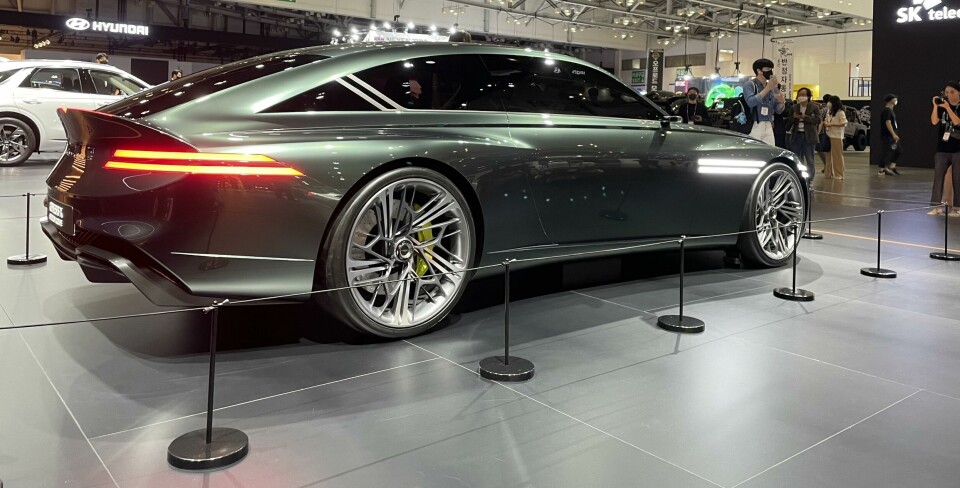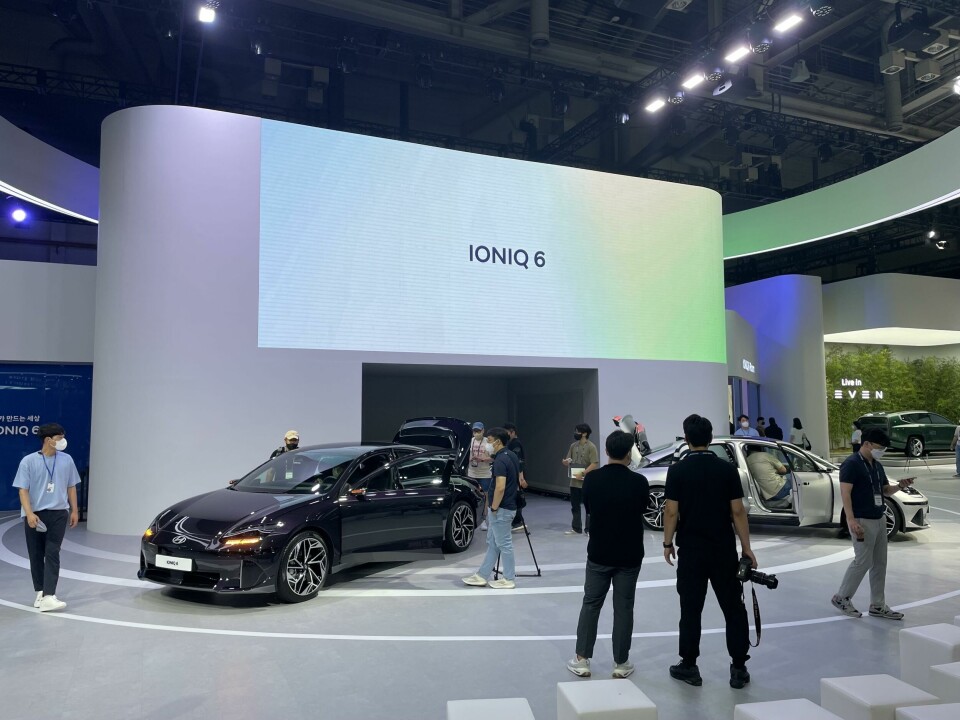
Hyundai goes big at Busan (Motor Show)
Car Design News was in South Korea for the Busan motor show, where homegrown brands Hyundai and Kia were out in force
For this occasionally jaded journo, lucky enough to have attended most global motor shows at one time or another, the chance to visit one I’d never even heard of was appealing. So in the interests of sharing, here is Car Design News’ second-only (known) review of the (almost) biennial Busan International Motor Show.
Busan is situated in the south of South Korea and is its second-biggest city, known for its port and tourist beaches, and with a circa 3.4 million population. As the first Busan motor show after the COVID-19 pandemic hit, face masks were mandatory inside the Bexco Exhibition space, which otherwise felt free and unrestricted. Unsurprisingly, the biggest stands belonged to national brands Hyundai and Kia, bookending each end of the long main hall, but there were also large stands for Genesis, BMW, Mini, and Rolls-Royce and a host of curiosities from dinky electric postal vans to extreme customisers, art cars and more.

Hyundai Ioniq 6
The global public unveil of the executive-sized four-door coupe was the big news for Hyundai, as the second production instalment of its all-electric sub-brand. As CDN had already seen the car at a preview, the main ‘news’ was detail on the 6’s range – which in its best guise will offer 379 miles (610km). That’s 60 miles (100km) more than the Ioniq 5, made possible through better aero and a denser battery.
Hyundai PnD
Away from central stage our interest was drawn to other exhibits which, while not totally new to the world, CDN hadn’t seen up close, including the short-range Plug & Drive (PnD) mobility pod, first shown at CES in January 2022. Senior designer in Hyundai’s future mobility team, Joon Ho Lee, told CDN the bell-jar shaped pod was a “new species of mobility” for smart cities, targeting elderly and infirm customers wanting to move safely (as well as cargo in other guises).
Very small wheels with their own suspension and steering at four points around the 1337mm long, 1225mm wide and 1890mm high pod move in all directions for easy navigation. In the scenario mooted, ‘connected’ apartment furniture in smart apartment blocks can move out of the way after the PnD ‘talks’ to them via sensors. In this way the user can easily reach their private balcony, dock with an outside lift and slide down the building, before moving to a ‘mother shuttle’ at street level to carry multiple PnD pods further.
Lee said the idea could be privately-owned or shareable and is made hygienic before each new user via a top-to-bottom, interior UV light scan. Entry, via a smartphone app, allows the curved clear door to rotate open and dispense with the need for bulky hinges and extra parts. For now, no existing city is ‘smart’ enough to integrate such a pod, but as an exercise in future mobility it shows the diversity of Hyundai’s current design exploits and was a working prototype CDN sampled. Note to the engineers: the flying saucer-style joystick needs to more accurately respond to user input – i.e. at first the PnD appeared to suffer from acceleration lag and then felt jerkily fast – although user error could also be to blame on this occasion!
Hyundai Staria & Casper
Keen followers of CDN should already recognise the Staria minivan. The space-age style eight-seater launched in 2021 is already a futuristic delight on Korean roads but at the Busan show a more deluxe limousine version was unveiled with a well-integrated roof box able hold more luggage in some areas and create greater headroom in others. Highly adjustable with a floor-mounted centre armrest box that can move fore and aft, large second-row individual captain-style chairs that can do the same, plus a big almost cabin-width screen behind the front row, the Staria limo feels like an upmarket 21st Century take on the Chrysler Voyager.
Testament to its flexibility of use case, we also spied an ambulance version outside our hotel and hear through the grapevine that an all-electric version could arrive within this model’s lifecycle and reach the UK too. Another Hyundai we can’t buy in most Western markets but that many there might appreciate, is the Casper city car, shown in van concept guise at Busan and a potentially fun addition to the Hyundai global range, with pleasing but not overt Honda e overtones. Senior management take note.
Kia
The equally-large Kia stand had a more diverse layout. There was a main stage showing the still-striking EV9 concept, a thought-provoking gallery area with 3D light-based artworks, a brightly-coloured kids’ zone with a large slide grown-ups weren’t allowed on (we asked), plus an abstract tree-like canopy sculpture from which dry ice-filled soap bubbles gently descended. Kids of all ages (including this one) were spied popping a few bubbles to trigger a dry-ice puff of smoke each time. Delightful.
Genesis
The premium wing of the Hyundai Motor group showed its Genesis X Speedium Coupé. The electric GT concept was first revealed at the 2022 New York Show in April, but looked good up close in Busan too, albeit still without an interior, which is a shame. The stand’s back area was also intriguing, eschewing slick modernist hotel foyer-style displays so typical of supposed ‘motorshow-premium’ for groupings of old but well-preserved artefacts around interests Genesis drivers might like, from classical music and more.
Dpeco
There was little sign of smaller Korean brands like SsangYong at the show, but there were curious smaller vehicles like Potro by Dpeco, an electric mini-truck manufacturer. It showcased a compact and configurable LCV with a friendly design able to accommodate post and other cargo via its 3405mm long chassis with a 2400mm wheelbase and drive 60 miles before a re-charge.
Best of the rest
The remainder of the show featured a strange hotchpotch of suppliers, customisers and even art cars. Perhaps the oddest of all was the Roadstaff stand which featured extreme mods of previously excellent designs, from a possibly over-slammed Lamborghini (Huracan LP610-4 Avio), which would surely run aground on the slightest speed bump, to a Porsche – the 935 we think – whose rear wheel arches were even more flared and wheels so ‘deep dish’ they were able to house tall aluminium drink cans nose on (see photo).
It was a shame to see the main hall not quite fully occupied with exhibitors and stands a little unfinished around many of their edges, but for a first try as the country starts to re-open to the rest of the world, these factors are more than understandable. Overall, the 2022 Busan Motor Show – which runs until July 24th – provided much automotive interest for this traveller, a chance to pore over product the pandemic had made tricky to see elsewhere first, and represented another exotic motorshow sampled for the first time.


























